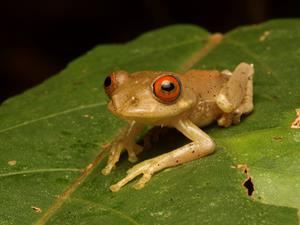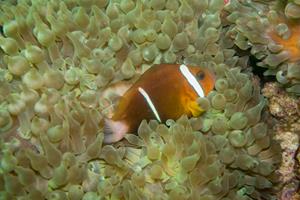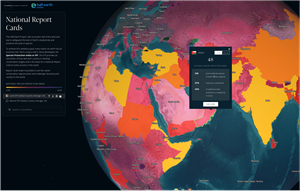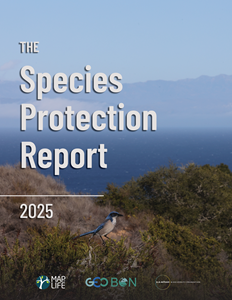Latest Global Report Reveals Major Successes and Gaps in Species Protection
Species Protection Report 2025 Introduced at Half-Earth Day in Chicago
Durham, NC, Oct. 29, 2025 (GLOBE NEWSWIRE) -- The second annual Species Protection Report–released in conjunction with Half-Earth Day–highlights global, regional, and national progress toward biodiversity protection goals. Now expanded to include tree species alongside terrestrial and marine vertebrates, 92,000 species have been assessed to better identify the species and regions in most need of conservation action.
As the 2030 deadline of the Kunming-Montreal Global Biodiversity Framework (GBF) approaches, measuring real progress toward its ambitious goals remains a central question facing nations and conservation organizations. Among the 23 Targets and 4 Goals of the GBF, Target 3, known as “30x30,” remains a focal point, calling for at least 30 percent of Earth’s land, inland waters, and marine areas to be conserved and managed for biodiversity by the end of this decade.
The Species Protection Report tracks progress towards Target 3 on an annual basis by providing an overview of the state of species protection at global, regional, and national levels. New analyses for about 34,000 terrestrial vertebrates, 13,000 marine mammals and fish, and 45,000 tree species reveal measurable progress in global conservation. Since last year’s report, over 70 countries and 30 marine Exclusive Economic Zones have raised their Species Protection Index (SPI) scores by more than one point, fueled by improved data reporting through the World Database on Protected Areas (WDPA) and the expansion of protected area networks.
Globally, the terrestrial vertebrate SPI rose by 3.1 points to 50.9 out of 100 and the marine SPI increased by 2.3 points to 62.1. The tree SPI, calculated for the first time this year, reached 58.3 points, indicating progress in protecting places that are important homes for diverse species. Currently, 15.1% of land and 8.4% of ocean areas are under some form of formal protection, as recorded in the WDPA.
About one-quarter of terrestrial vertebrates and one-third of marine vertebrates have Species Protection Scores (SPS) of 90 or higher, indicating that global conservation networks are successfully safeguarding these species’ habitats. However, 20% of terrestrial vertebrates and nearly 8% of marine vertebrates have extremely low or no protection, with scores below 10, and their SPS clearly indicate the need for increased conservation efforts.
The Species Protection Report centers on the SPI, the only formally adopted indicator for Target 3 that directly quantifies the role of protected areas in conserving species. Using detailed spatial datasets on tens of thousands of species, the SPI evaluates how well conservation areas protect habitats that are priorities for biodiversity.
Published each year to reflect changes in SPI values, celebrate conservation successes, and highlight areas in need of additional conservation efforts, the report supports ongoing global monitoring of biodiversity trends. It is produced by the E.O. Wilson Biodiversity Foundation’s Half-Earth Project, in partnership with the Map of Life (MOL), the Group on Earth Observations Biodiversity Observation Network (GEO BON), and Esri.
For an interactive view of global conservation progress, national SPI values are available on the Half-Earth Project Map, along with other layers of data and specific information on species of interest.
“The Species Protection Report and Half-Earth Project Map democratize the information that countries need in order to know what to do, and where, to best meet their commitments to protect global biodiversity,” said Paula J. Ehrlich, President & CEO of the E.O. Wilson Biodiversity Foundation. “By creating a way to measure and nurture conservation success, we help ensure that we leave no species behind.”
_______
Data Sources: Half-Earth Project Map – E.O. Wilson Biodiversity Foundation (2025), Map of Life – Yale University (2025)
About the E.O. Wilson Biodiversity Foundation
The E.O. Wilson Biodiversity Foundation’s mission is to reimagine the way we care for our planet. The Foundation’s major initiative, the Half-Earth Project, is working to inspire informed collective action to save the biosphere. Visit www.eowilsonfoundation.org to learn more.
About the Map of Life
In collaboration with data and impact partners worldwide, the Map of Life leverages the latest approaches and technologies to deliver authoritative and detailed information on the distribution of species and their change. Visit https://mol.org/ to learn more.
Attachments

Niquole Esters VICE PRESIDENT, STRATEGIC ENGAGEMENT E.O. WILSON BIODIVERSITY FOUNDATION 300 Blackwell Street, Suite 102, Durham, NC 27701 nesters@eowilsonfoundation.org Office: 984-219-2279 Mobile: 510-631-7571
Böhme's_bright_eyed_frog
Endemic to Madagascar, the Böhme’s Bright-eyed Frog (Boophis boehmei) saw its SPS go from 42 to 75.
Oman_anemonefish
The Oman Anemonefish’s (Amphiprion omanensis) SPS increased from 3 to 89, a testament to Oman’s commitment to preserving its biodiversity.
Oman_SPI_NRC
As seen on the Half-Earth Project Map, Oman has improved its terrestrial SPI score to 48 by establishing new protected areas and enhancing its reporting to the World Database on Protected Areas (WDPA).
spi_report_cover
The second annual Species Protection Report is released in conjunction with Half-Earth Day 2025 in Chicago.
SPI Graphs horizontal
Terrestrial and Marine SPI have increased to 50.9 and 62.1, respectively, while Tree SPI (included for the first time) is at 58.3.
Legal Disclaimer:
EIN Presswire provides this news content "as is" without warranty of any kind. We do not accept any responsibility or liability for the accuracy, content, images, videos, licenses, completeness, legality, or reliability of the information contained in this article. If you have any complaints or copyright issues related to this article, kindly contact the author above.





